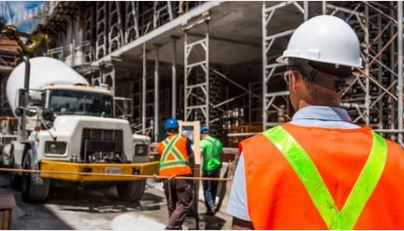The construction industry plays a vital role in most economies. Projects are commenced with completion dates in mind. They are sometimes behind schedule, which could be due to quality concerns with building materials, staff turnover, and supply chain challenges. Regardless of these issues, construction sites are always busy with exciting work. Some building sites do not have permanent or fixed toilet and washroom facilities. In this case, hiring various portable site units may be more valuable than constructing toilet units.
The Health and Safety Executive (HSE) mandates construction sites to provide their workers with the toilets and washing facilities required to carry out their work effectively. These units are either flushing or chemical toilets. The HSE requires construction companies to follow specific guidelines or requirements relevant to each type of toilet. For example, flushing toilets are expected to be connected to a mains water and drainage system. In the absence of these, the management team at these sites can opt for washrooms with a built-in water supply and drainage tanks.
Construction sites are usually expected to have both washing facilities and toilets. With washing facilities, workers can easily wash their hands, forearms, and face after completing a task. When a construction site is being set up, here are some issues or considerations the HSE expects developers to consider when setting up toilet and washing facilities.
Standard toilet and washing facility considerations at construction sites:
- Gender-neutral facilities: The HSE is comfortable with unisex toilets at construction sites, depending on crucial criteria. These gender-neutral facilities are acceptable if they are secure and lockable rooms and separate from urinals. Construction companies are expected to provide sanitary waste disposal systems to accommodate female workers. In terms of a shower, a unisex system can be operated if they exist as a separate system and only affords a user at a time. A critical point is a functional lock in these fixed or mobile units.
- The toilet to user ratio: Companies must provide sufficient and regularly maintained toilet facilities at construction sites. The HSE reveals that the BSI standard (BS6465-1-2006) advocates for a plastic toilet for seven individuals working approximately a 40-hour week. Their cleaning and servicing frequency will determine if a 1:7 ratio works. Units that are less frequently emptier may require the hiring of more portable facilities to ensure workers are adequately catered for their sanitary and toilet needs.
- Consistent cleaning of facilities: The nature of the building sites and the level of work carried out contribute to the facilities’ dirty state. We discussed how a daily clean of construction toilet units might be insufficient in a previous article. Workers go into these units with muddy boots and dirt, intending to freshen up for the next round of work. It explains why standard or portable facilities on construction sites become unpleasant quickly, usually a few hours after a thorough clean has been carried out. The season of the year, the number of users of a toilet facility, and the type of work carried out will demand more than a daily clean of these units.




